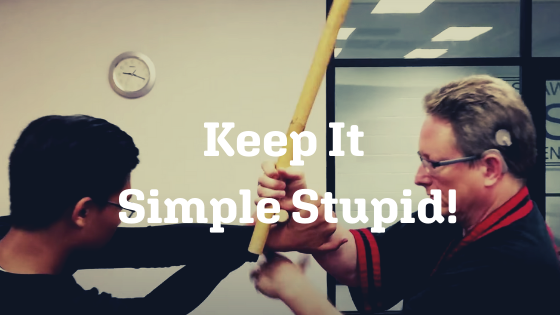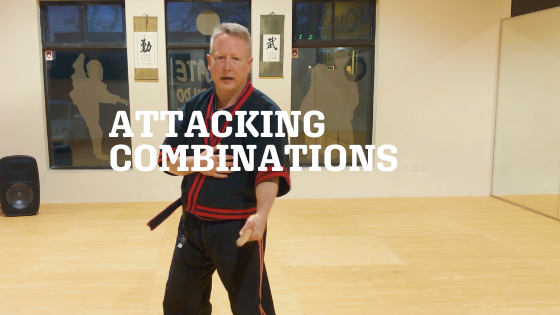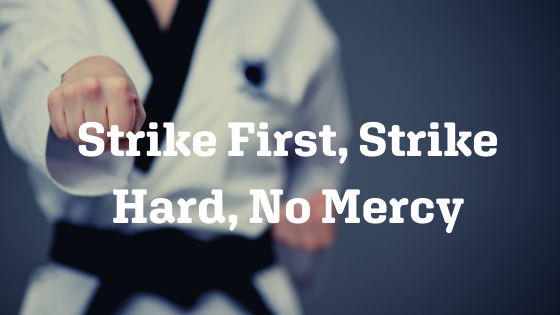Flow Drills vs. Techniques
Over the years I’ve taught Modern Arnis, I have flipped back and forth between teaching the art through techniques and flow drills. Lately, I have begun to emphasize flow drills more. Why?
While teaching one-step techniques has its place, there are limitations to this method. The most severe limitation, in my opinion, is that the one-step method does not develop the flow. If students stop and reset for every repetition of a technique, they never really learn the flow.
I have come to the view that teaching students how to flow is vitally important. From experience, I am increasingly finding it more comfortable to teach my students Modern Arnis through flow drills instead of stand-alone one-step techniques.
Don’t get me wrong; there is a place for one-step technique work. I often use the one-step technique as a precursor to my teaching flow drills. See the below video on how I teach a flow drill. Every technique that I teach can be a stand-alone technique.
If you are not able to view the video, click here.
Let’s break down what is taught in this video:
- the slap-off.
- the tapi tapi block;
- the inside clear;
- Abanico Corto;
- right sweep stroke; and
- the pull-off.
Put them together, and voila, you have a flow drill! It keeps both partners busy and introduces them to the flow, even if it’s just prearranged.
I have found that the more my students do the flow drills, the more likely they “accidentally” insert a portion of another drill when practicing one. “Oops, I didn’t mean to do that.”
I chuckle when I hear that because they are beginning to perform without thinking! This is exactly what I’m looking for, the ability to perform techniques without thought.
Most students will not be able to reach this stage by practicing one-step techniques. Flow drills are the key to developing the ability to react and counter without thought.
Many flow drills emphasize Modern Arnis’ major concepts, such as palis-palis, changing hands, stick grappling, thrusting, high palis-palis, hitting, crossada, posing, umbrella/wing blocks, intercepting check, and hitting. Once the students learn them, we can start mixing and matching them until they can spontaneously counter anything thrown at them. They also learn the intangible skill of sensitivity to their opponent’s energy.
As you might guess, an element of stress inoculation absent in the one-step format is involved. This means that flow drills must be performed with intent, not mindlessly.
As you might have guessed by now, I constantly think about teaching and the best way to impart art to my students, children, and adults alike. I constantly ask myself: What teaching method works best? Am I getting the information across effectively? Are my lesson plans advancing their skill?
I’ve been pondering the issue of teaching flow drills vs. one-step techniques for months. Because my students have shown noticeable improvement due to increased emphasis on flow drills, I’m going to shift the focus of the classes much more toward flow drills. Stay tuned for updates on my students’ progress!
Additional Reading
- 3 Great Reasons For One Step Sparring
- 5 Problems With One Step Sparring
- Go With The Flow!
- Video of the Week 8: Single Sinawali Pattern
- Breakout Groups Or Not?
Share this post:
- Click to share on Twitter (Opens in new window)
- Click to share on Facebook (Opens in new window)
- Click to share on LinkedIn (Opens in new window)
- Click to share on Threads (Opens in new window)
- Click to share on WhatsApp (Opens in new window)
- Click to email a link to a friend (Opens in new window)
- Click to share on Pinterest (Opens in new window)
Related
Tags In
Brian Johns
Related Posts
5 Comments
Leave a ReplyCancel reply
Categories
- Arnis/Kali/Eskrima (132)
- Book Review (8)
- DVD Reviews (3)
- Guest Post (4)
- Inspiration (24)
- Martial Arts (111)
- My story (96)
- Safety (15)
- Tips & tricks (6)
- Uncategorized (3)
- YouTube Videos (8)







[…] apply the same concept to my flow drills. We’ll start with the compliant version. Once the students have them memorized, I will […]
[…] or adrenal dump from free sparring or a street self-defence situation. For this reason, I emphasize flow drills after the basics are […]
[…] paired them up randomly and went through the flow drills beginning with the first one. Nearly every time they had trouble adjusting to their partner. They […]
[…] As many of you know, I teach 20 Flow Drills. […]
[…] Flow Drills vs. Techniques […]